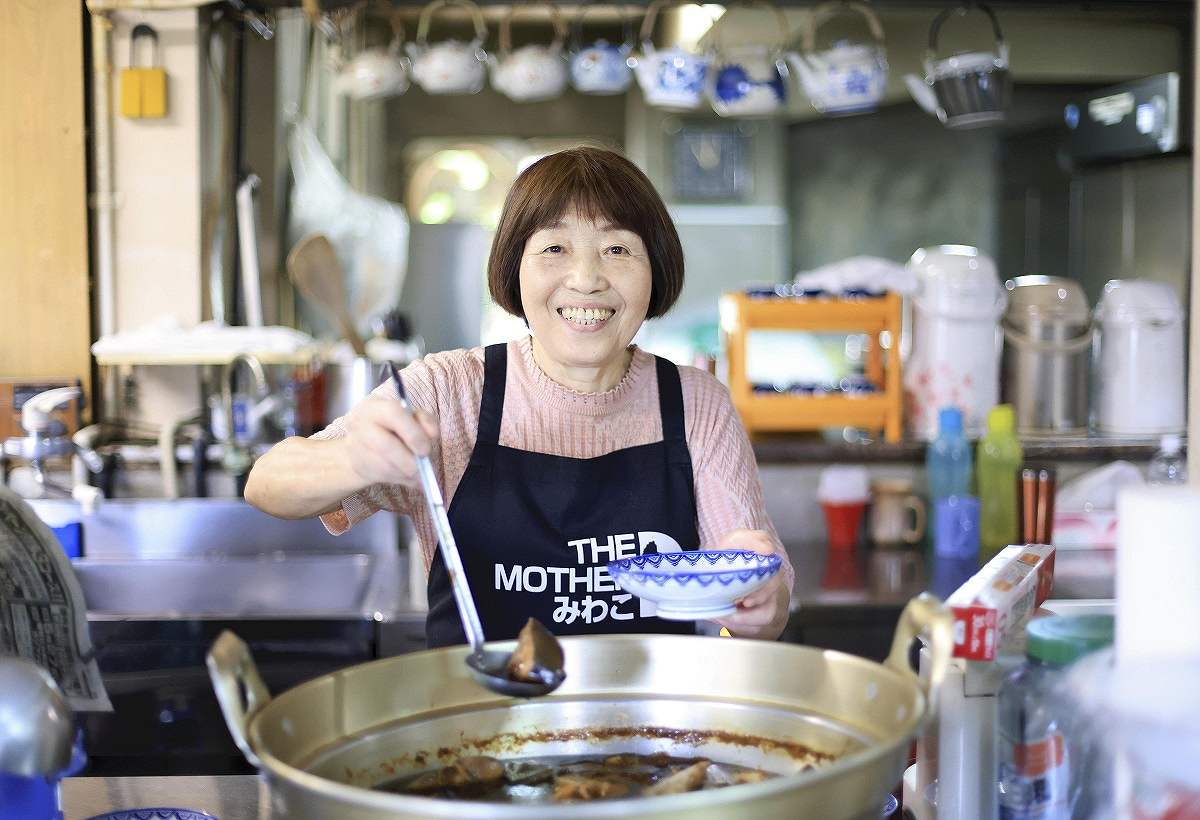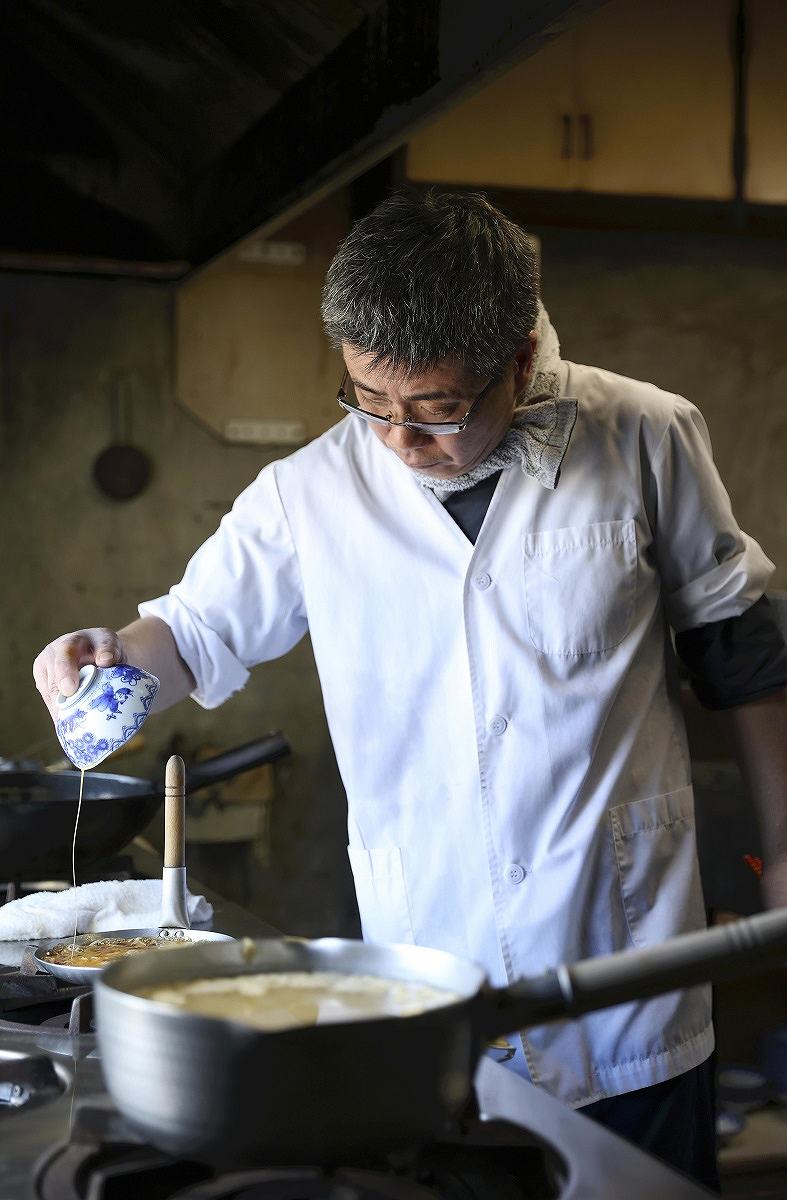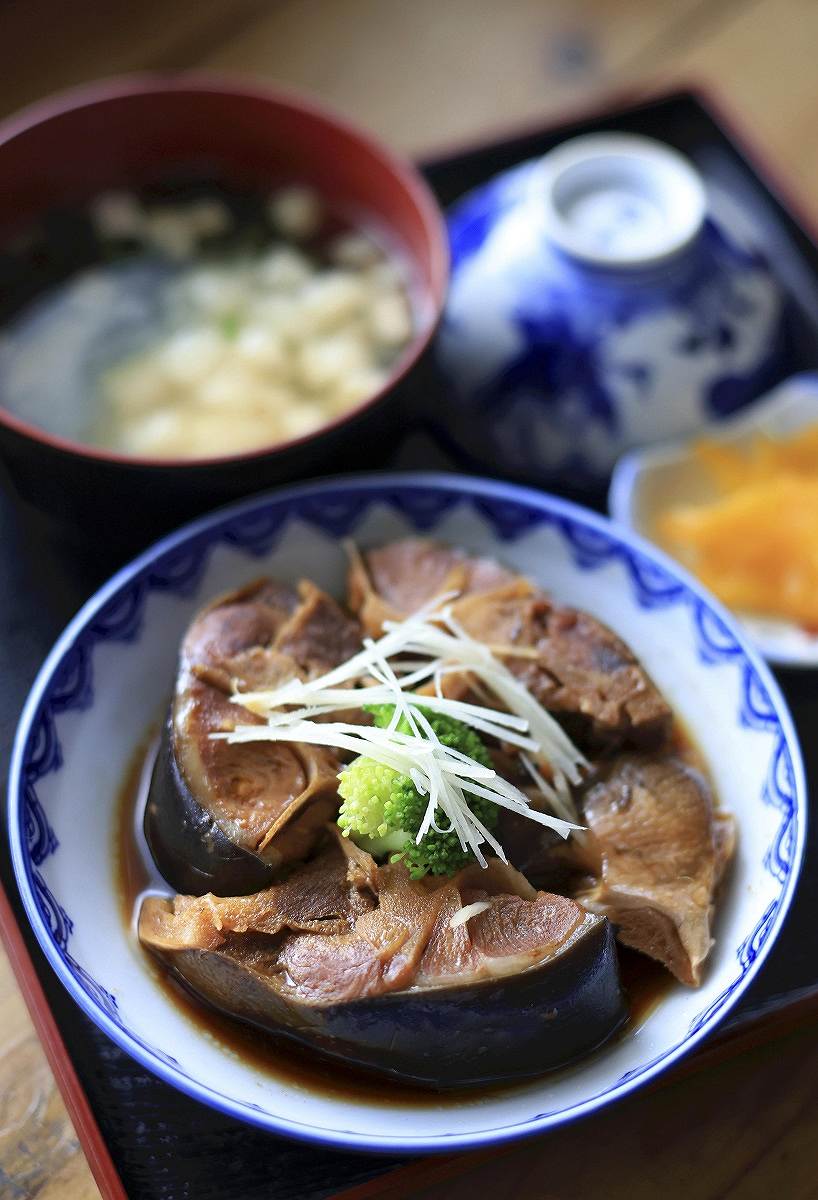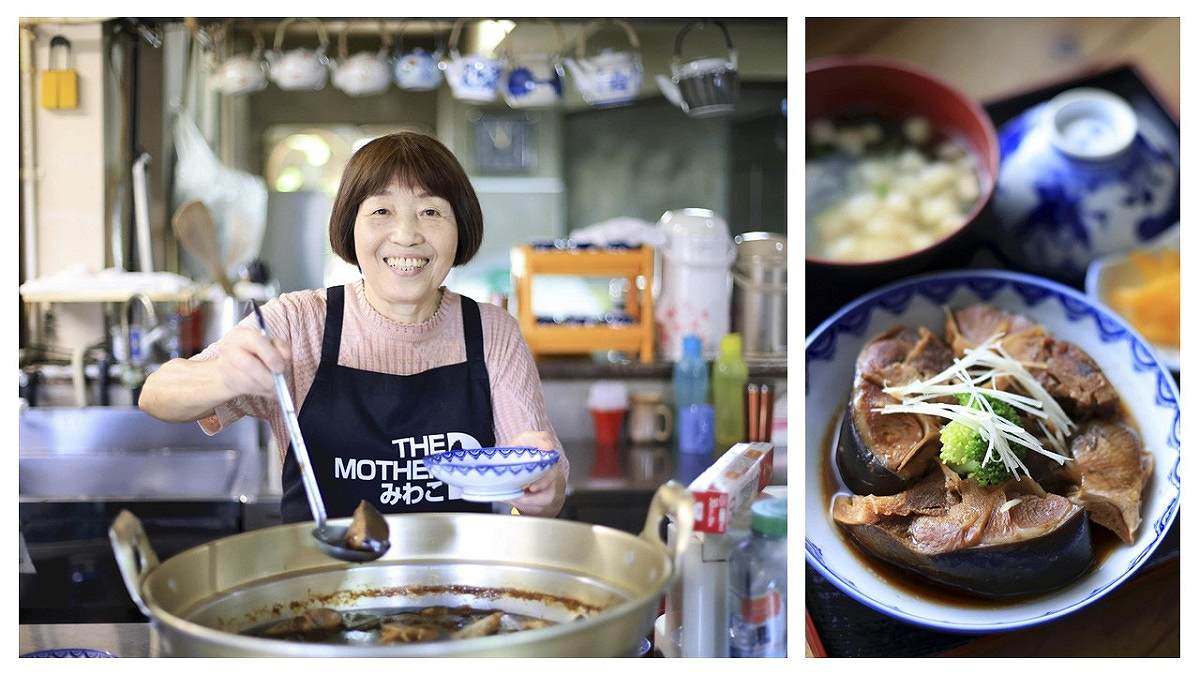
Miwako Sako at the Hama no Chaya restaurant in Kagoshima
12:30 JST, August 25, 2024
Sakurajima Island sat proudly in the middle of the bay under the clear blue sky to my right as I walked along National Route 226 from Hirakawa Station in Kagoshima. I enjoyed the view of the spectacular island, which is a symbol of Kagoshima Prefecture, and it wasn’t long before I approached a purple banner flag waving in the wind.
The banner read “Aradaki,” which means boiled fish heads and other bony fish parts. This is the specialty dish of the restaurant Hama no Chaya.
“We have been serving this dish since the restaurant opened. Try it,” 78-year-old Miwako Sako said cheerfully as I entered the restaurant.
The dish uses the heads of local yellowtail fish. The prefecture is the largest producer of farmed yellowtail in the country. In the dish I had, the locally produced yellowtail head was simmered for about 40 minutes in soy sauce, mirin, sake and granulated sugar – the secret ingredient. No water was used in the dish.


Great: Miwako’s nephew Hisayuki is in charge of cooking in the restaurant. Down: The restaurant’s specialty dish: “Buri no Aradaki” (boiled yellowtail)
“The trick is to wash the yellowtail clean and not to cook it for too long,” says Hisayuki, 48, Miwako’s nephew who is in charge of cooking at the restaurant. The flavors of Kyoto, where he trained as a chef, give the dish a light flavor with its final touches.
The cooked yellowtail had a nice cross-section. The meat was so soft that I could easily separate it with chopsticks, which surprised me. The sweet-tasting soy sauce, typical of the Kyushu region, and the strong flavor of the fat yellowtail exploded in my mouth. The skin had a plump texture and before I knew it, I had finished the rice. The Aradaki menu also includes miso soup, a small side dish and Japanese pickles and costs 850 yen.
A 34-year-old company employee from the city who visited the restaurant with his colleague said, “I have eaten aradaki in many places, but this is the best. Sometimes I bring people from outside the prefecture, and they also love the aradaki here because it is so delicious.”
From the restaurant, you can see the island of Sakurajima and it seemed like time was passing slowly. The relaxed atmosphere changed completely just after noon when the restaurant quickly filled up with customers who worked nearby.
The kitchen was in a frenzy. “Aradaki, a large portion of rice and fried karaage chicken!” Miwako called into the kitchen. She memorizes orders without taking notes because, she says, “speed is everything.”
Hisayuki prepared the dishes quickly, with an ice-cold towel around his neck. When the dishes were ready, Miwako brought them to the tables and said, “Here, thank you for waiting!” Hisayuki’s mother, Hisako, 72, also helped. They had a lot to do. “The whole family runs the restaurant,” Miwako said proudly.
Family tragedies
The restaurant opened in 1968. The head chef was Yoshihisa, Hisayuki’s father. The following year, Miwako married Yoshihisa’s older brother Katsuyoshi and began managing the restaurant.
Shortly after, Katsuyoshi quit his company and opened a sushi restaurant in the same premises as the restaurant. Miwako worked at the restaurant until the evening and at her husband’s sushi restaurant at night. “There were a lot of parties, so I worked while I was pregnant with my sons,” Miwako said with a smile.
Yoshihisa died in 1997 and Katsuyoshi in 1998. Miwako considered closing the restaurant, but she recalled, “The locals told me to leave the lights on.”
Around this time, Hisayuki, who was training to be a chef in Kyoto, decided to return to the restaurant, which encouraged Miwako to continue.
Watching the stars
Miwako remembers her customers’ faces even if she doesn’t know their names. She always tells them things like, “You should eat a lot” and “Come back soon.”
A 56-year-old customer who comes to the restaurant at least five times a month said, “I come here not only because the food is delicious, but also because I like her cheerful personality. I enjoy chatting with her in the restaurant.” Miwako said with a smile, “The customers give me strength.”
When Miwako arrives at the front door of her house after work, she looks up at the starry sky and says in her heart, “Hey guys, another day has ended peacefully.”
Miwako says these words not only to Katsuyoshi, but also to her dog John and her cat Chibi.
“I repeat the same thing every day,” she said, laughing. But I wonder how difficult it is to continue to experience peaceful days without major incidents. “I want to stay healthy and work for at least five more years and see the restaurant’s 60th anniversary,” she said.
She is determined to keep the lights on in the restaurant.
Family-run restaurant has maintained traditions for over 50 years

